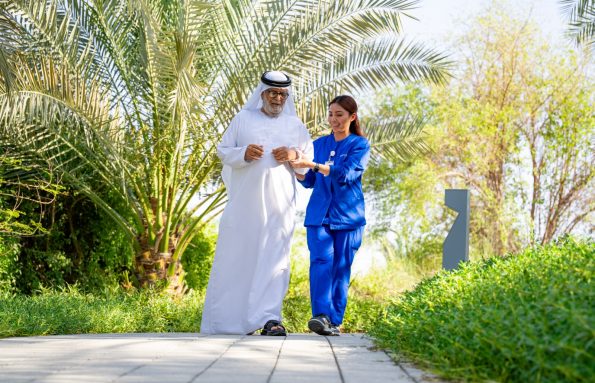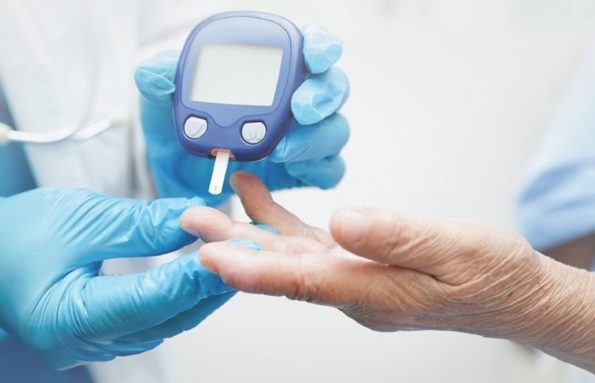Heatstroke occurs when body temperature rises above 40°C and nervous system collapses
With the intense summer in the UAE comes a greater potential for heat-related illnesses.
With temperatures exceeding 50 degrees Celsius, especially in humid or hot conditions, there is higher risk of heatstroke. Vulnerable groups, such as the elderly and obese, are at increased risk due to their bodies’ reduced ability to regulate temperature. Not being accustomed to high temperatures is a primary risk factor for heat-related problems, with heatstroke being the most severe and potentially life-threatening condition.
Medical advice
Speaking to Gulf News, Dr Imad El Majzoub, consultant, emergency medicine, at Sheikh Shakhbout Medical City (SSMC), said heatstroke occurs when the body temperature rises to 40 degrees Celsius (104°C) or greater and there is dysfunction in the central nervous system (CNS).
“This is accompanied by a systemic inflammatory response,” he said.
“Signs of CNS dysfunction include irritability and confusion but may progress to seizures, altered mental status, and coma. Circulatory collapse or shock is present in 20 per cent to 65 per cent of heat stroke patients. Bleeding may be noted from multiple body sites.”
Dr El Majzoub categorises heat stroke into two types:
- Exertional heat stroke: Occurs during intense physical activity or heat exposure, influenced by factors like the environment, gear, physical conditioning, and lack of heat acclimatisation.
- Classic heat stroke: Affects individuals with poor heat regulation, such as those with comorbidities, the elderly, young children, or those on medications affecting heat response.
Treatment
Early recognition and intervention are crucial for effective treatment, said Dr El Majzoub.
Immediate measures include removing the person from the hot environment and stopping physical activity. Rapid cooling is essential and should start as soon as possible, even before reaching medical facilities. Effective methods include:
- Cold water immersion: The fastest and most effective cooling method is to bath in cold or ice water.
- Evaporative cooling: Spraying the skin with tepid water and fanning, effective especially for elderly patients and those with heat exhaustion.
- Conductive cooling: Whole-body cooling by actively rotating ice packs and ice water-soaked towels across the body. Using cooling blankets and ice packs applied to the whole body. There is limited benefit of ice packs placed only on the axillae, neck, and groin.
Cold intravenous fluids may also supplement other methods of cooling but are not considered sufficient alone. There is no evidence for the use of any pharmacologic agent.
Antipyretics have not been studied but are presumed to be ineffective due to differences in the physiologic mechanism involved in heat stroke, Dr El Majzoub said.
Antipyretics may actually prove harmful in patients who develop hepatic, hematologic, and renal complications, he added.
How to avoid sunstroke in the summer
“Prevention is key for all heat illnesses. Avoiding exertion or being outdoors at peak temperatures and maintaining hydration are mainstays in preventing heat illness,” said Dr El Majzoub.
Public warnings during heatwaves and care for at-risk populations are essential, he said, adding that the wet-bulb globe temperature index should be used for the assessment of environmental heat risk. If not available, the heat index can be used. He advised following risk cases and measures:
- Athletes or soldiers in training are vulnerable to heat illness regardless of environmental temperature. Trainers, supervisors, and medical staff should be educated on heat illness, especially on the recognition of early stages.
- Acclimatisation to hot and humid environments is also important for the prevention of heat illness. This is generally done by 1-2 hours of exercise in heat over 10-14 days.
- Substance abusers are also at increased risk for heat-related illness, especially when using drugs that increase metabolic rate, such as amphetamines, cocaine, ecstasy, and phencyclidine (PCP), because these agents may cause an increase in body temperature regardless of environmental temperature.
- Overweight or obese individuals may be at increased risk for heat-related illness.
- A former case of heat stroke can put an individual at risk for subsequent heat-related illness for months following the event.
- The most reliably modifiable risk factor is hydration status. Dehydration has been linked to increased physiologic strain, decreased sweat rates, increased perceived exertion, and increased core temperatures. Hyperhydration has not been shown to have an effect on heat tolerance. Guidelines suggest that euhydration before activity and a “drink to thirst” mentality during exertion are preventive for heat-related illness.






